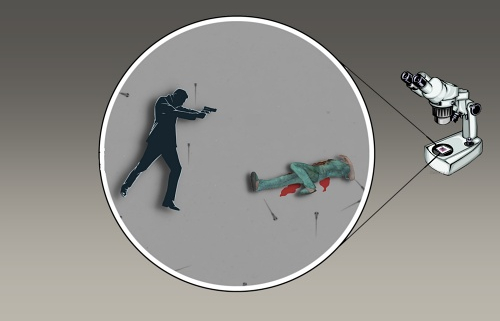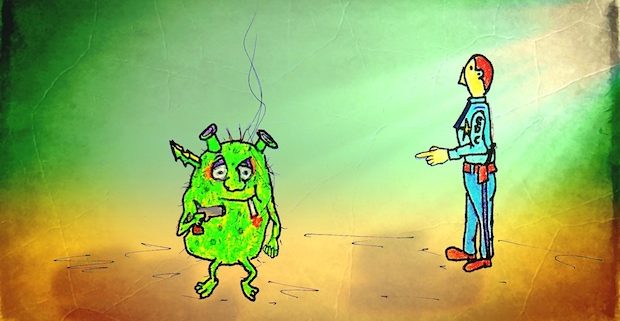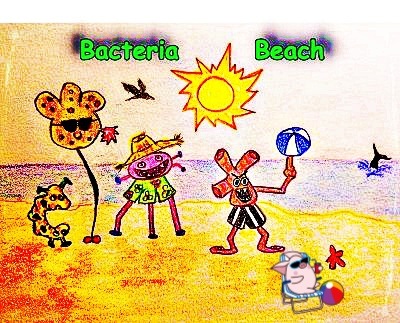What’s so interesting about microbiology? Microorganisms were here before man walked the Earth, and they’ll be here after we’re gone. Actually, you would find it difficult to survive without them. Some bacteria, called commensals, live in and on our bodies to our benefit, protecting us from invading pathogens (disease causing germs), and they produce vitamins.
On the opposite end of the spectrum are the bad bugs. They’re responsible for more deaths than cancer, heart attacks, and war. They can disfigure, eat flesh, paralyze, or just make you feel so bad you wish you were dead.
There are four major types of microorganisms: bacteria, viruses, fungi, and parasites. They can cause damage directly, or they can release toxins that do the dirty work for them.

CDC image
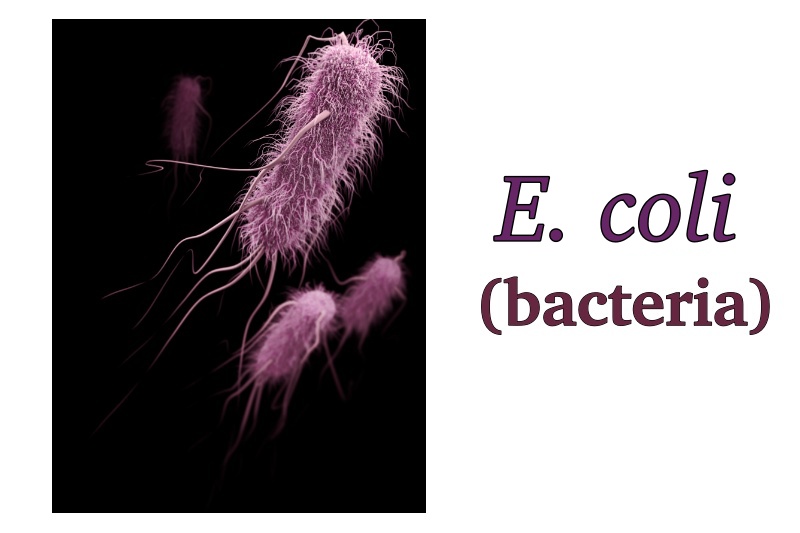
CDC image
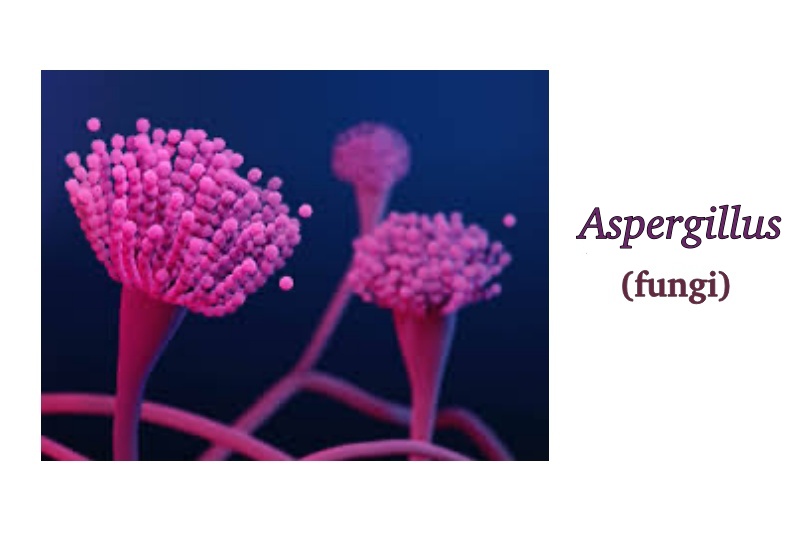
CDC image

CDC image
So, how can your villains use microorganisms to kill? First they’ll need a fundamental knowledge of microbiology, such as information that’s taught in a basic college course. Next, the bad guy will need a source of bacteria. Microbiology labs all over the world contain bugs of all types.
Labs of this type are secure so a little B & E would be in order. Or, maybe your villain has a connection with a person who has control of the bug of interest. If so, the evil-doer could make what’s known in the trade as a V.I.P. trip. He’d fly to the friend’s lab, place the bug in a plastic vial, hide the vial in his pocket (V.I.P.), and get back on the plane for the trip home.
Once the potential killer has the bug, he has to keep it alive and reproducing. Bacteria are grown on agar plates (food for bugs) in an incubator. In general, bacteria double in number every 20 minutes. So, if you start with just a few bugs, let’s say 10, and allow them to grow overnight…well, you do the math. Once the bad guy has enough of the bug, then it’s time to deliver it to the intended victim.

Picking up bacteria from agar plate. The brownish-red material is the agar. The grayish coloring at the top of the agar is E.coli bacteria.
Now for a true story. It wasn’t murder, just an unfortunate accident that involved a woman, some green beans, and a home canning jar. Canning jars have lids designed to exhibit a slight indentation in their centers when food is fresh. If the indentation inverts (pops up), the vegetables may be contaminated, and should be discarded.
A woman was preparing dinner for her family and decided to serve some of her home-canned green beans that evening. She picked up a jar of beans, but thought the pop-up didn’t look quite right. So, to satisfy her curiosity, she opened the jar, touched her finger to the bean juice, and tasted it. It tasted fine to her, so she cooked the beans and served the steaming hot dish to her family. The next day the woman died, but her family survived. The beans contained botulism toxin produced by the bacteria, Clostridium botulinum. C. botulinum lives naturally in the soil.
Botulism toxin is one of the most powerful neurotoxins known to man. About 10 ounces could kill everyone on Earth. It works by paralyzing its victim. Why didn’t the other members of the family die? The toxin is inactivated by heat.
 Dr. Denene Lofland received her PhD degree in pathology from the Medical College of Virginia, and she’s a trained clinical microbiologist. She has served as the Director of Clinical Laboratory Sciences at Wright State University, and has worked in biotech/drug research and development for many years.
Dr. Denene Lofland received her PhD degree in pathology from the Medical College of Virginia, and she’s a trained clinical microbiologist. She has served as the Director of Clinical Laboratory Sciences at Wright State University, and has worked in biotech/drug research and development for many years.
As a biotech director she and her team developed and received FDA approvals of the drugs gemifloxacin (Factive), an antibiotic for the treatment of bacterial pneumonia, and Cayston, an inhaled antibiotic for cystic fibrosis. Both medications have been prescribed by physicians worldwide.
As Manager of Operations for a company that specialized in high-level anti-bioterrorism research and development, Denene supervised several projects, including government-sponsored research for the Defense Advanced Research Project Agency (DARPA), which required her to maintain a secret security clearance.
Denene has published numerous articles in scientific and other peer-reviewed journals. She contributed to the thirteenth edition of Bailey and Scott’s Diagnostic Microbiology, and she’s a contributing author of the Textbook of Diagnostic Microbiology (Elsevier 2022).
She was recently named a Fellow of the Association of Clinical Scientists, an elite association of top scientists from around the world that includes pathologists, clinical chemists, molecular and cell biologists, microbiologists, immunologists, hematologists, cytogeneticists, toxicologists, pharmacokineticists, clinicians, cancer researchers and other doctoral scientists who are experts in laboratory methods for the elucidation, diagnosis, and treatment of human diseases.
Denene is the former director of Microbiology and Immunology at Drexel University College of Medicine.

